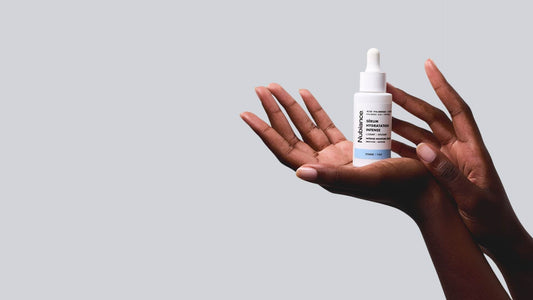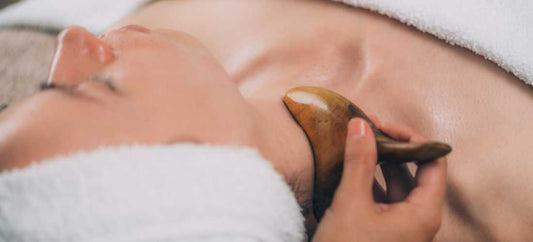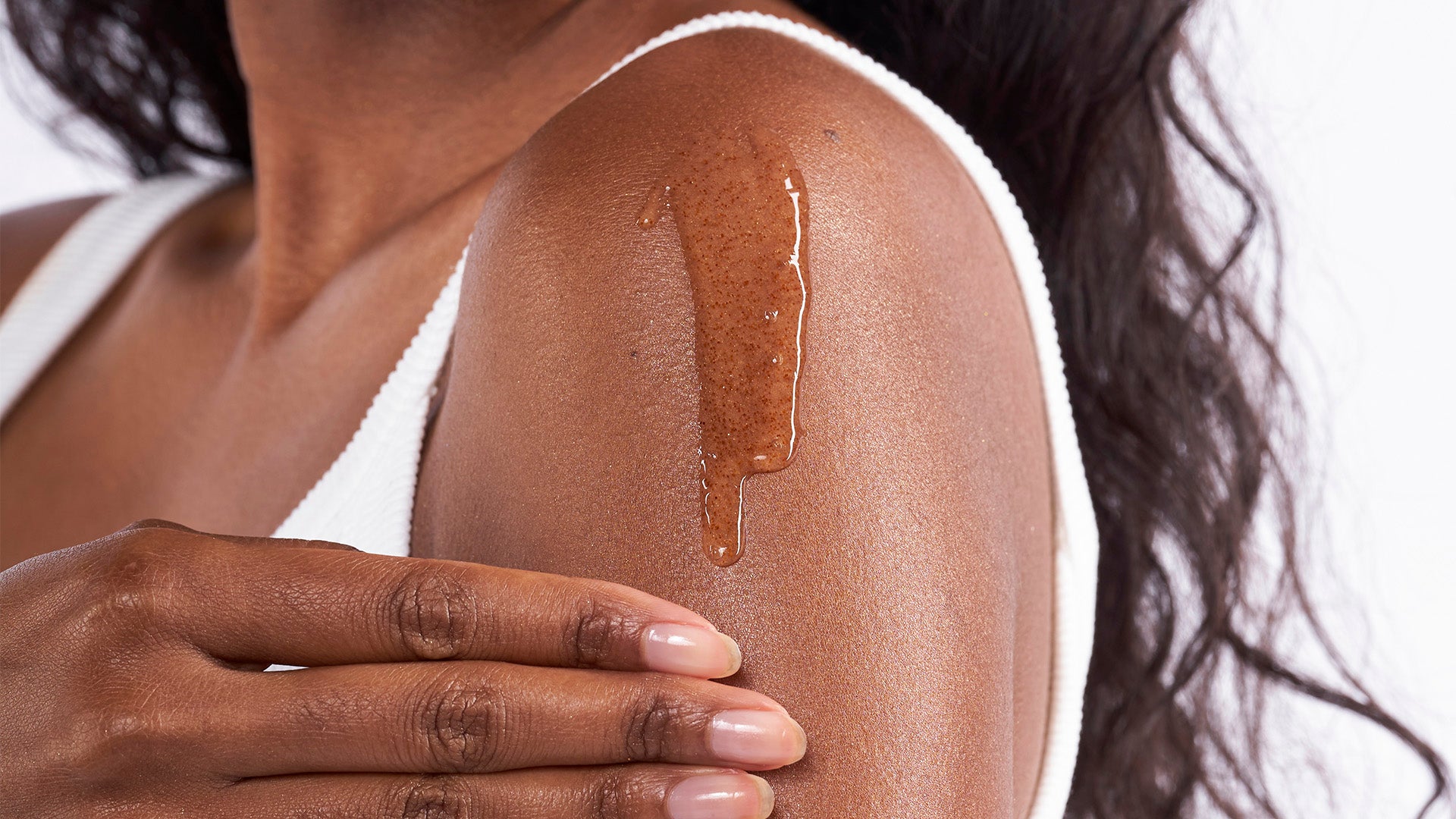
Interview with Dr. Naomi Boulay Pesenti: The effects of breast cancer and treatments on black and mixed-race skin
Partager
Interview with Doctor Naomi Boulay Pesenti, Pharmacist specialized in dermocosmetics and expert in black and mixed-race skin. Better known as @DrNaomiblay on social networks.
In celebration of Pink October , Breast Cancer Awareness Month , we decided to interview Dr. Naomi to discuss in more detail the onset of breast cancer, the impact of cancer treatments on the skin, and the specificities of pigmented skin.
Transcription
Q: What does Pink October represent?
Naomi : Pink October is the month dedicated to breast cancer awareness. Health professionals, patients and associations come together to share their expertise, experience and actions in order to raise awareness of the importance of early detection, breast cancer prevention, as well as to support research to improve treatments.
Q: Who is affected by breast cancer today?
Naomi : According to the League Against Cancer , breast cancer affects more than 61,000 people per day. It is the main cancer in women, but it is important to remember that in rarer cases, it can also affect men. The figures also show an average age of 50, but we are increasingly realizing that the age of diagnosis is earlier. This is why awareness is starting among the youngest.
Q: What are the risk factors?
Naomi : There are multiple risk factors:
- Lifestyle: tobacco and alcohol consumption, sedentary lifestyle, excess weight, etc.
- Genetics / Family history: Mutation of the BRCA1 and BRCA2 gene
- Some treatments, particularly hormonal ones
Q: As a pharmacist, what advice can you give to help you target symptoms and get tested?
Naomi : It is true that as a pharmacist, we really have a key role in patient education. I often say that it is important to know your body: to know in a healthy state, the size and shape of your breasts because they can be naturally different. Subsequently, I recommend once a month after the menstrual period, self-palpation gestures. This will allow you to define the appearance of an abnormal mass in the breast or in the armpit area. You must also look at the nipple, pinch it and analyze the appearance of an abnormal discharge.
Then we will also have to have a mammogram, which is a test that allows us to analyze the presence of an abnormal mass. Depending on the results, it can lead to an ultrasound or an MRI.
Q: What is your role as a pharmacist today when dealing with patients with breast cancer?
Naomi : What you have to understand is that there are different types of pharmacists and it is the pharmacists present in the pharmacy or in the hospital who will be most confronted with this clientele. In the context of the pharmacy, pharmacists have a privileged relationship of trust with each of our patients.
We will be among the first to be notified when the diagnosis is announced. Our role is to be present, to listen and to offer therapeutic education sessions in the spirit of the times. This allows us to have a special one-on-one time with the patient to explain her treatment if necessary, ensure compliance and support her in managing her side effects.
Q: As a dermocosmetic brand, we would like to know more about the adverse effects of anti-cancer treatments on the skin?
Naomi: For several years, I have been questioning and interested in the appearance of skin problems, mainly linked to the adverse effects of various anti-cancer treatments.
Among the treatments, it must be understood that there is indeed chemotherapy but there is also targeted therapy , hormone therapy, radiotherapy or surgery. Each treatment will have side effects that are more or less specific to them, so generally speaking, if we start from head to toe we have:
- alopecia which occurs very early when chemotherapy begins
- an acneiform eruption similar to acne but aseptic
- intense skin dryness with increased sensitivity
- hand-foot syndrome which is characterized by xerosis, desquamation and hyperkeratosis
- cracks with more or less sharp edges and a more or less deep thickness
- fragility of the nails which can lead to loss of the matrix
- vaginal dryness
- redness that can lead to loss of elasticity in the radiotherapy area.

Q: Faced with its side effects, what dermocosmetic advice do you share?
Naomi : There are several types of patients, those who were very skincare addicts before and then those who unfortunately did not take care of themselves. The most important thing is to explain to them that their skin will become more sensitive and that it will be necessary to pamper it to limit the impact of the treatments. The idea is to moisturize, nourish and protect.
As I said, it's baby skin, so it's going to be more emollient, moisturizing and soothing care. The formulas must be hypoallergenic , suitable for sensitive skin . Thermal water is recommended after radiotherapy to refresh the skin and soothe it. For nails, I will recommend the daily application of silicon-based varnish.
Q: Last question, Nubiance Paris is a dermo cosmetic brand that is mainly aimed at black and mixed-race skin. Are there any specific skin characteristics to take into account between Caucasian and pigmented skin patients during the management of their anti-cancer treatment?
Naomi : Very good question and I like it a lot. We should not try to have specificities everywhere… The side effects are mostly common. For example, when we have textured hair , we can also be subject to the appearance of alopecia after chemotherapy.
On the other hand, as an expert and having been able to work very closely with dermatologists , the challenge of pigmented skin is characterized in the after-treatment. Post-inflammatory hyperpigmentation will be present after radiotherapy or the appearance of an acneiform eruption. We know that this is one of the main problems of black and mixed-race skin.
the face and which can leave, as usual, post-inflammatory spots on black and mixed-race skin .
The second topic is the appearance of keloids, especially after a mastectomy. The entire scar will be hypertrophic and will then require corticosteroid injections...
Naomi
Q: Thank you Dr. Naomi for your complete and enriching answers. It was a pleasure to receive you, we learned a lot. And would you perhaps have something to add to close this video?
Naomi : For a little anecdote, I did a street interview as part of my show @chezdrnaomi on the theme of Pink October, I realized that we were all more or less closely or distantly linked to a person suffering from breast cancer.
You can share this written interview or in video format to also participate in this awareness month. We all have a key role to play.




